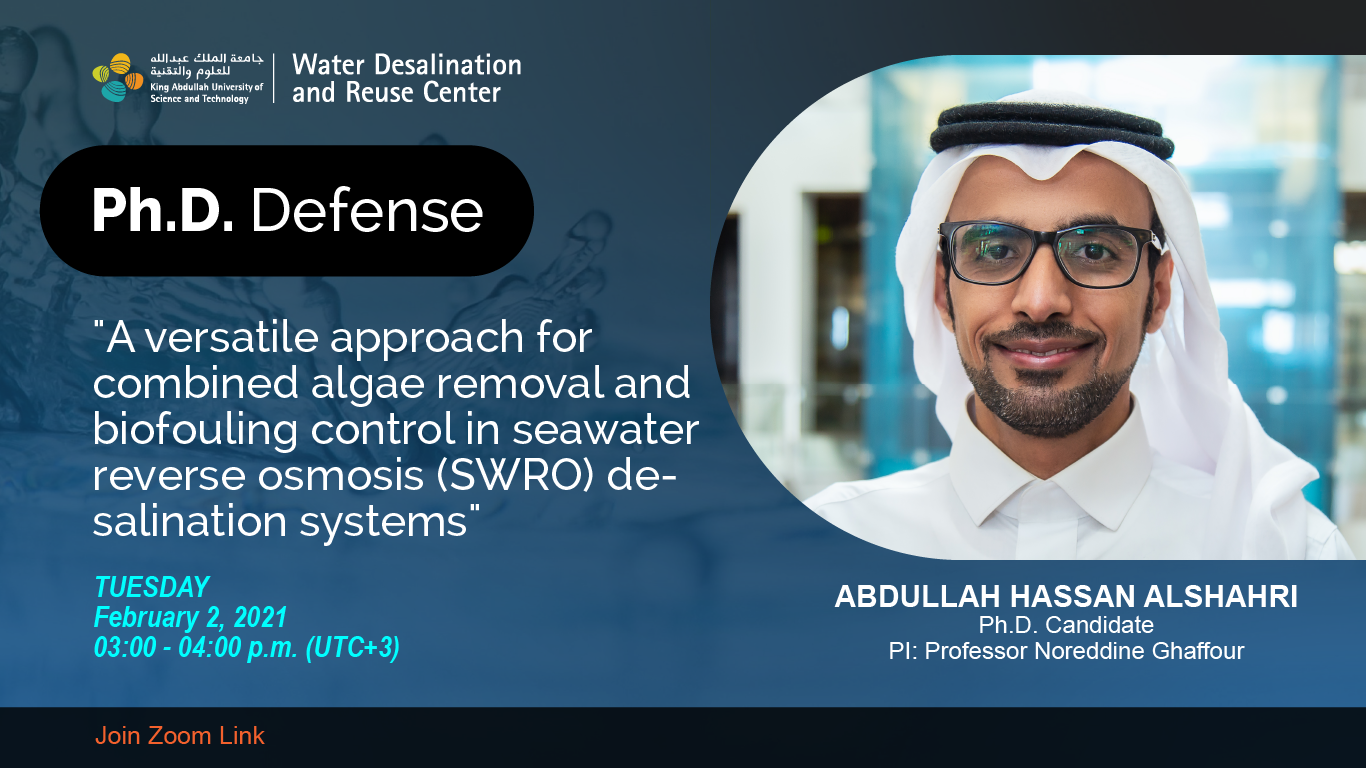



The goal of this study was to evaluate the feasibility of using advanced coagulation with Fe(VI) in coagulation-flocculation-sedimentation/ flotation systems for the pretreatment of SWRO desalination plants during algal bloom events.
Algal organic matter (AOM) material extracted from marine diatom species (Chaetoceros affinis) was added to Red Sea water to mimic algal bloom conditions. Low dosage of Fe(VI) (<1 mg Fe/L) was very effective at improving feed water quality containing AOM (algal bloom conditions). Based on results from both a bench-scale DAF unit and Jar testing unit, 0.75 mg Fe/L of Fe (VI) proved to be effective at improving the raw water quality which is comparable to the performance of 1 and 3 mg Fe/L of Fe (III). The removal efficiency for both testing units with the use of Fe(VI) was up to 100% for algae , 99.99% for ATP, 99% for biopolymers and 70 % for DOC. The improvement in Fe(VI) performance is related to the simultaneous action of Fe(VI) as oxidant, disinfectant and coagulant.
The performance of Fe(VI) coagulant was also evaluated with the use of coagulant aids (clays). The overall turbidity, DOC, biopolymers and algal cells removal was improved via using Fe(VI) and clays at very low dose. Generally, it was found that for the same pretreatment performance achieved, a much lower Fe(VI) dose was required compared to Fe (III), which make it important to study of cost effectiveness for using Fe(VI) instead of Fe(III) and estimate cost savings during algal bloom conditions.
A detailed cost comparative study was conducted for Fe(III) vs. Fe(VI) coagulation process based on the removal efficiency. The use of Fe(VI) reduced coagulant cost by 86% and sludge disposal cost by > 99% compared to the use of Fe(III) in the pretreatment process. The use of Fe(VI) reduces the operational and maintenance cost in SWRO desalination plant by 7% and the production cost by 4%. This study proved that the use of Fe(VI) during high turgidity and algal bloom conditions helped providing high raw water quality to the RO process with lower chemicals and operations cost as well as low chlorine and iron residuals.